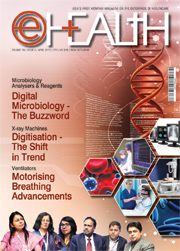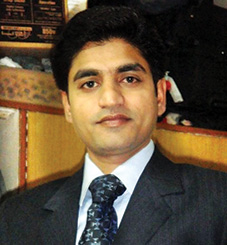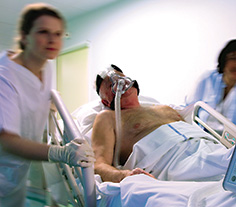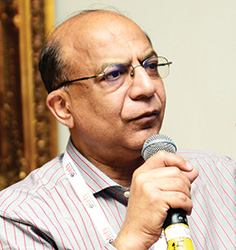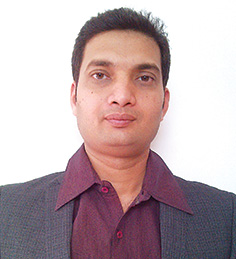

Director, ITM Institute of Health
Sciences, Consultant & Quality
Manager, MGM Microbiology
Laboratory, MGM Medical College &
Hospital, Mumbai
What are your views on Microbiology Analysers and Reagents market in India vis-avis the global market?
In 2014, the global In Vitro diagnostics market in all probability surpassed the US$ 50 billion mark. One of the most important market drivers promoting this achievement is the regular need for detecting infections. Infectious disease testing will be a key driver for diagnostic testing because new pathogen strains develop each year, such as in seasonal influenza and H1N1. Additionally, hospital-acquired infections, such as Methicillin-Resistant Staphylococcus Aureus (MRSA), necessitate increased testing.

While advances in viral diagnostic techniques have become widely adopted because of the difficulties associated with viral culture, to date, none of the technological innovations in clinical bacteriology have allowed microbiologists to completely abandon the doctrine of traditional culture techniques. As new molecular diagnostic assays for infectious diseases have become viable options to address the current clinical needs, microbiologists now face the challenge of leaving the comfort zone of traditional culture techniques. I also believe that a wave of automation is coming to microbiology laboratories in India too and that this change will occur much more rapidly than expected. Moreover, the changes associated with selection and implementation of microbiology automation solutions will place significant management and financial challenges upon laboratory leadership.
Could you tell us about your current operations in India and your expansion plans?
We are offering courses in nursing, optometry, medical lab technology, stem cell, biosciences, biochemistry & microbiology. We are also planning to offer molecular biology and genomics courses.

Our institution is expanding its wings in biosciences- molecular biology, microbiology, medical laboratory sciences, biochemistry; we have some national and international collaboration for these health science courses.
At ITM, we are planning to put up a high-end automated lab set up in collaboration with reputed hospitals and diagnostic industries for our biosciences programme. This will also be open for patients to access more accurate and reliable reports in a shorter turnaround time.
At MGM Laboratory, we have a manual culture system for bacteriology, whereas we do have a real-time PCR and ELISA for diagnosis of viral infections and tuberculosis. We also have a Hains Line probe assay for rapid diagnosis of tuberculosis and resistance pattern. We also have an immunofluorescence setup for diagnosis of microorganisms that are difficult to isolate.
We are currently planning to look for an automated bacteriological culture system for isolation and identification of bacterial infections.
What are your views on the price sensitivity of the Indian market, and how does your hospital counter this problem?
Over the next few years, microbiology labs will see a significant transformation from manual processes to fully automated systems, allowing labs to increase throughput, enhance traceability, increase accuracy, precision, reduce costs, and, finally, improve patient care. Large microbiology setups are making significant capital investments to build total lab automation system (TLA). These systems will eventually prove to be inflexible, costly to maintain, and expensive to upgrade. The focus of interest for laboratories will be on the vendors that do not just automate an existing manual process but, instead, drive automation with new methods that create added value. But for mid segment and smaller microbiology labs cost saving is the need of the day. Our countrys laboratories are under increasing pressure to save money, resulting in the need for inexpensive, yet effective, and rapid manual microbiology tests. Automated microbiology is fast, but the costs per test and initial capital investment is quite high. Our research and development laboratory is developing fast, easy-to-use, rapid tests for pathogens such as Candida, Streptococcus, Pseudomonas, Nieseria, and MRSA and has also developed a line of inexpensive, easy-to-use chromagenic culture media for MRSA, Candida spp., Staph aureus, Salmonella, Enterococcus, Mycoplasma, ESBLs and common urinary-tract pathogens. Another issue facing the laboratory today is an aging workforce, with more microbiologists retiring than entering the field. We need to motivate young brigade to take this field for brighter prospects.
Traditional culture-based microbiological analysis techniques are of very limited value because they take far too long to produce a result. Automated and rapid microbiological testing methods have been developed over the past few years and the trend nowadays is toward technology that allows continuous real-time monitoring and early warning of contamination problems.
What are your views on government regulation and challenges faced while operating the Indian market?
In recent years, while automation has steadily spread throughout the biochemistry and clinical hematology areas of diagnostic laboratories, clinical microbiology laboratories have largely been excluded from this trend. Although, continuous monitoring blood culture systems, automated microbial identification, and automated antimicrobial susceptibility testing systems are widely utilised in microbiology laboratories, microbiology specimen processing and culture workup, in particular, remain largely manual tasks, and indeed, few changes to the methods used to perform these tasks have occurred for many years. Government needs to be more focused on their approach towards infection control. There must be some strict regulations regarding infection control policy. But at present procurement of microbiology analysers and the running cost per test is too high. Government must take some further initiative to provide these equipments at an affordable rate to hospitals and laboratories. No doubt some initiatives are being taken up by the government, such as NABL and NABH standards for accreditation of hospitals even for Rajiv Gandhi Arogyayojana. Even under RNTCP programme Gene “Xpert is provided free to some centres for TB diagnosis.
For a private non-government unaided hospital or laboratory, it becomes difficult to procure and maintain such expensive high-end automated microbiology analysers. Lots of challenges are faced by microbiologists regarding buying such instruments and then maintaining them even on a no-profit scheme. I strongly believe that we need to come out of this vicious cycle and reap the benefits of automated microbiology analysers for real-time monitoring and control of infections.
In summary, I believe that we are entering an age of monumental change for clinical microbiology laboratories. Though a precise assessment of the full impact of these changes is in its infancy, it is clear that the benefits of automation on microbiology laboratory efficiency and indirectly on clinical care will be profound.
Be a part of Elets Collaborative Initiatives. Join Us for Upcoming Events and explore business opportunities. Like us on Facebook , connect with us on LinkedIn and follow us on Twitter , Instagram.



